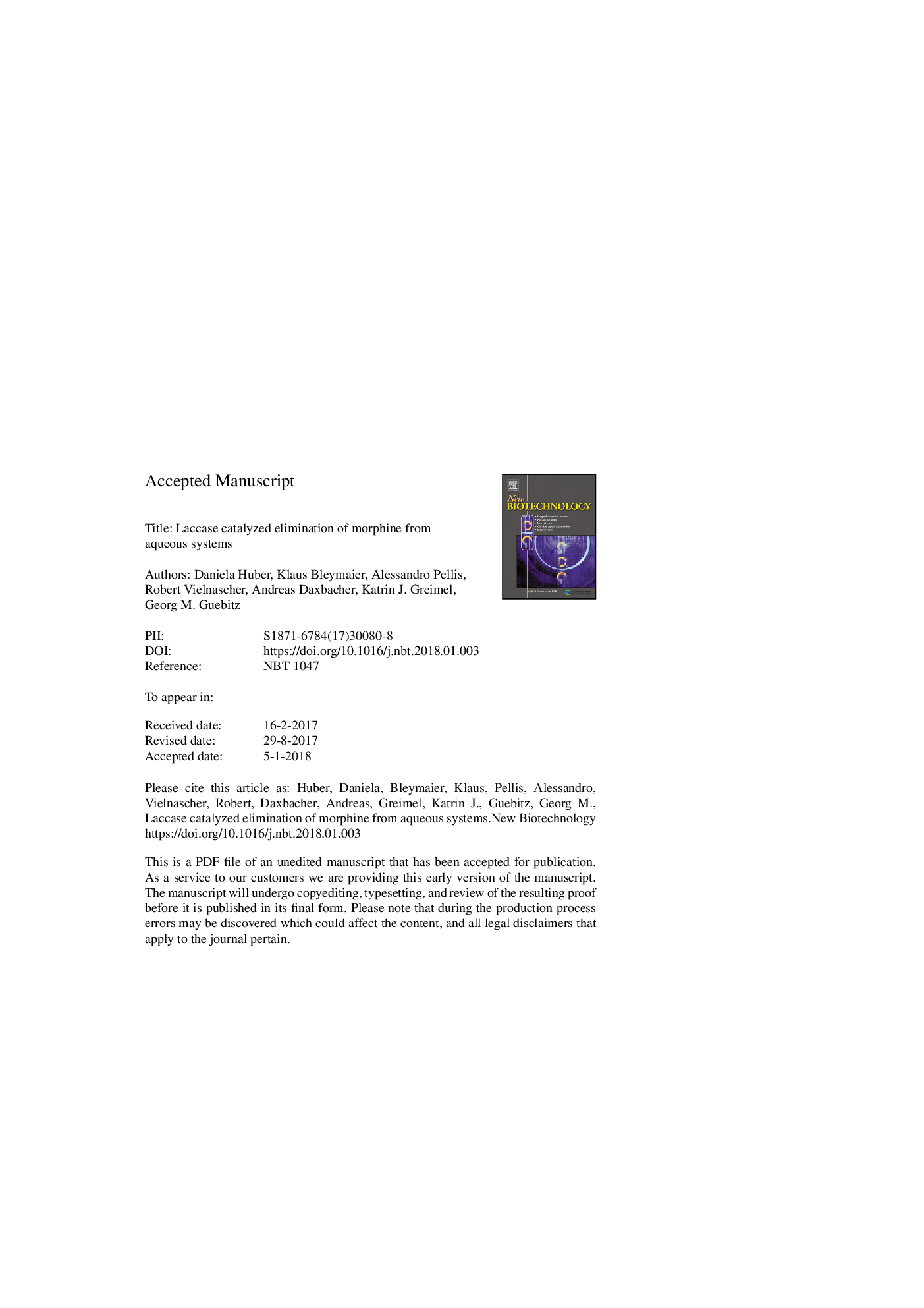| Article ID | Journal | Published Year | Pages | File Type |
|---|---|---|---|---|
| 6494835 | New Biotechnology | 2018 | 23 Pages |
Abstract
Pharmaceuticals contaminate the environment for several reasons, including metabolic excretion after intake, industrial waste and improper disposal. The narcotic drug morphine is commonly utilized for chronic pain management, and the distribution of morphine in aqueous systems and in waste waters is of high concern. Here, the removal of morphine by a laccase from Myceliophthora thermophila both in its free form as well as immobilized on Accurel MP1000 beads was investigated. Complete morphine elimination was achieved within 30â¯min for the free and the immobilized enzyme (70% bound protein) for concentrations between 1 and 1,000â¯mgâ¯Lâ1 according to LC-TOF mass spectrometry analysis. Higher morphine concentrations up to 60â¯gâ¯Lâ1 were also tested and total elimination was achieved within 6 h. Therefore, laccases are ideal candidates for removing morphine from aqueous systems.
Related Topics
Physical Sciences and Engineering
Chemical Engineering
Bioengineering
Authors
Daniela Huber, Klaus Bleymaier, Alessandro Pellis, Robert Vielnascher, Andreas Daxbacher, Katrin J. Greimel, Georg M. Guebitz,
